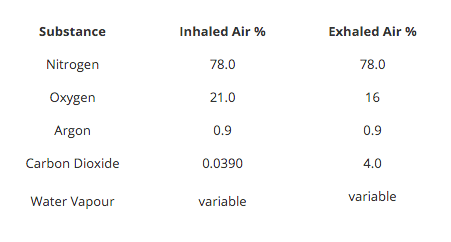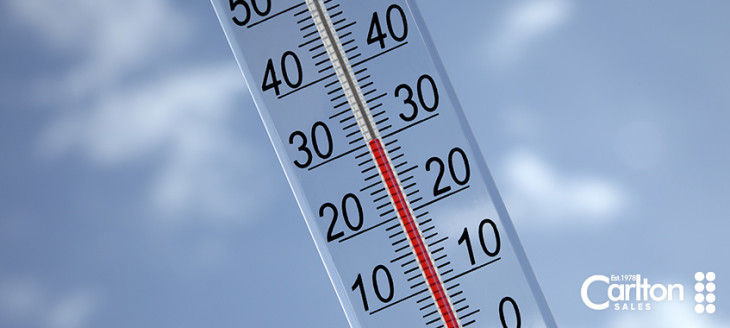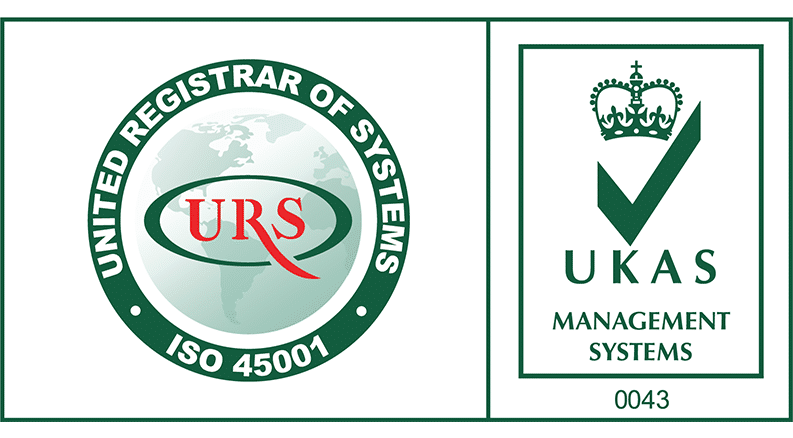
25/11/2022
Without the air we breathe, no life would exist on Earth. But what do you really know about this invisible substance that is all around us? In this interesting guide, we look at some fascinating facts about the air we breathe and how air conditioning can benefit us more than we realise, in terms of both health and productivity.
1. What Is The Air We Breathe?

The most important ‘ingredient’ in the air we breathe is, of course, oxygen. The composition of air typically consists of approximately 78% nitrogen, 21% oxygen, and trace amounts of other gases. Among these trace gases, argon makes up around 0.93%, carbon dioxide and trace amounts of other gases such as argon, neon, helium, methane, krypton, hydrogen, and xenon. . These percentages can vary slightly depending on factors such as location, altitude, and pollution levels, with nitrogen and oxygen being the most abundant components. That said, it is believed that it is the high proportion of nitrogen that created the perfect conditions for life to be formed, making Earth the only known planet to support life. The composition of air changes when we inhale and exhale. The table below shows what happens to the composition of air when we breathe:

As you can see, as air is inhaled and exhaled, there are significant changes in the levels of oxygen and carbon dioxide. If the levels are not restored through a constant supply of fresh air, we can experience drowsiness.
Fact: Working as part of a fully maintained ventilation installation, an air conditioning system helps to ensure that the air maintains an optimum temperature. A constant cycle of air provided by a a fully operating HVAC system will further assist by restoring oxygen levels and therefore helping to eliminate tiredness and boost productivity in the workplace. It can also ensure that increased moisture levels in the air as a result of breathing are not able to gather and lead to other problems such as condensation and damp spots – provided of course that the HVAC system allows fresh air to enter and damp air to escape.
2. How Clean Is Your Air?

Whilst contaminants may only form a tiny proportion of the air around us in our homes, offices and workplaces, they can have a huge impact on our health both long and short term. So what are the worst offenders?
Carbon Monoxide (CO) – interferes with the ability of blood to carry oxygen. In small amounts it can cause drowsiness and nausea, whilst high levels can cause unconsciousness or even death in the worst cases. The most common sources of carbon monoxide are cooking and heating devices within buildings, and vehicle fumes from traffic. One of the biggest risks of carbon monoxide is its tendency to accumulate in enclosed spaces – offices and workplaces included.
Fact: An air-conditioning system can help to reduce the danger of carbon monoxide by helping to keep air moving and avoid accumulation (industrial premises and commercial kitchens, however, should also pay careful attention to their extraction systems – air conditioning forms just part of the HVAC system).
Ozone (O3) – in severe cases, inhalation can lead to damage to lung tissue, retinal damage and cataracts. One of the biggest causes of ozone in the workplace is photocopiers. Care should always be taken to follow the manufacturer’s advice for safe operation.
Did you know: Ozone is not only caused by equipment – it is also naturally produced as a result of atoms becoming energised by the heat of the sun.
Particulate matter (PM) – affects lungs: tiny solid or liquid particles present in the outside air, especially in urban environments. Key sources include lorry and car engines, burning coal, fires and blowing dust.
Fact: opening the office windows allows a free flow for all particulate matter into the office. An air conditioning installation, on the other hand, will filter out the vast majority of PM, meaning it is a considerably better solution for most workplaces. The cost of operation will be more than offset by the health benefits to staff.
Random Fact: The air we breathe is contained within the Earth’s atmosphere. Did you know that if the world was an apple, the atmosphere that forms the layer of air we breathe would be as thin as its skin!
3. Does Air Conditioning Cause Asthma?

An increasing number of people are suffering from asthma, and with increased levels of pollution, the symptoms can be more and more pronounced. Air pollution and pollen are amongst the biggest triggers for asthma, and both can be substantially reduced by using a well maintained air conditioning system with the correct filters installed.
Heatwaves are reported to be a major trigger for asthma attacks, therefore maintaining a comfortable working environment in the summer months can be highly beneficial to your staff.
It is worth noting, however, that in a recent survey by Asthma UK* 75% of respondents indicated that cold air – including that caused by excessive air conditioning – can cause symptoms of asthma.
It is important, therefore, to consider the balance between the benefits and risks before simply setting the air conditioning to max. Used correctly and considerately, an air conditioning system in the workplace can provide real-time health benefits to your team, boosting productivity and avoiding the costs associated with absence due to sickness.
* https://www.asthma.org.uk/advice/triggers/weather/
4. Where Does The Air We Breathe Come From?

You might think that you are well travelled, but the chances are that the miles you’ve covered in your lifetime are nothing compared to the air you breathe. The air that surrounds our planet is never still, thanks to the effect of the sun’s heat. In fact, the transportation of elements and particles that is facilitated by this constant movement plays a vital role in the world’s ecosystem.
Fact: what many people don’t realise is that the air around has travelled thousands of miles. In fact, what you are breathing right now may have been halfway around the world just a few days ago.
In the course of its journey, air picks up all kinds of passengers – an increasing number of which are, unfortunately, harmful to the health. This makes it increasingly preferable to use air conditioning for its filtering function.
So how did this air come into being? The vast majority of air within the atmosphere was actually formed billions of years ago by tectonic forces – the same forces that are responsible for creating volcanoes and mountains, as well as causing earthquakes and tsunamis.
The other key factor in the creation of the air around us is photosynthesis – the process through which plants live, and in which carbon dioxide is extracted from the atmosphere to be replaced with oxygen.
Fact: Plants and trees play a vital role in producing the oxygen in the air we breathe. Think about this next time you inadvertently forget to water the office foliage!
5. Do People Make The Room Warmer?

It is commonly believed that the number of people in a room can cause an increase in the temperature – but is this true or just an urban myth?
Even an extensive search of the major search engines will fail to provide a scientifically supported answer to resolve this debate once and for all. It is suggested that the increase in heat would, theoretically, be at a minimum directly proportional to the number of people who enter a sealed room.
It is often said that the temperature in an office could rise by one degree for every person present – but if you consider an office with thirty people, it is easy to see the flaw.
Other factors would also come into play – the more activity people do, the greater the increase would theoretically be.
The final word – Sorry, if you were thinking of going home to reduce the numbers and make everybody else that little bit cooler (a noble gesture, wouldn’t you agree?) that just isn’t going to cut it with the boss! Ultimately, the temperature of your office or workspace is most affected by the air temperature in and around the building, and the best working environment is most effectively controlled with a correctly installed and properly used air conditioning system.
However, the number of people, amongst other factors, is a highly important factor – especially in premises such as nightclubs for example require more AC due to large amounts of people in small areas. Gyms require almost double that of an office due to the extra heat. Glass also has a huge impact on the ac kit – When working out an AC system people numbers, electrical equipment, lighting and glass are all taken into account; so it pays to have a specialist do the maths!
6. What Is The Maximum Legal Temperature For My Workplace?

Maintaining a healthy temperature in the workplace during the warmer summer months has numerous benefits. According to Unison, “Too much heat can make us feel tired and less energetic, cause heat (muscle) cramps, and place extra strain on the heart and lungs. Tiredness and loss of concentration can also lead to an increased risk of accidents.” Now that alone sounds like a good reason to make sure that your air conditioning is running smoothly.
As it stands, the law does not define a specific maximum working temperature, however Unison is amongst parties calling for this to be changed.
At present, an employer is legally required to provide a working environment which is “so far as is reasonably practicable, safe, without risks to health, and which has adequate welfare facilities” according to (s2(2)(e) of the Health and Safety at Work Act (HSWA). Whilst in reality this may only have a direct effect on certain kinds of workplaces where exposure to extreme temperatures forms part of the job, all employers should bear it in mind.
As a general guideline for normal working conditions, an absolute maximum temperature for indoor work would be 30C; or 27C where the work is strenuous. According to the World Health Organisation (WHO), the maximum temperature for indoor working should ideally not exceed 24C. A minimum of 20C is also recommended for offices.
Fact: The easiest and most cost effective way to maintain the working conditions suggested by the TUC, UNISON and WHO amongst others is to use an air conditioning system at the correct settings. With the chance of changes being made into law in the future, it makes sense to invest now if you haven’t already and stay ahead of the game.
At Carlton, we have been a market leader in supplying, installing and servicing commercial air conditioning systems for over 35 years. With a huge range of air conditioning systems and solutions available, as well as every part you could require, we can offer you the ideal solution whatever the nature of your premises and budget. Our team of experts are always available to answer your questions – to discuss your air conditioning needs in more detail, contact us now or drop us a line on 01793 512550. Alternatively, browse our full range of air conditioning equipment.














